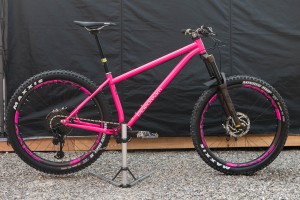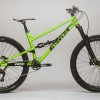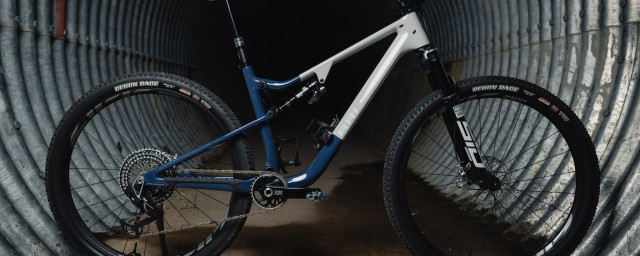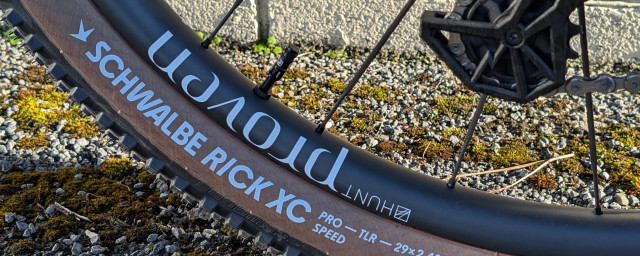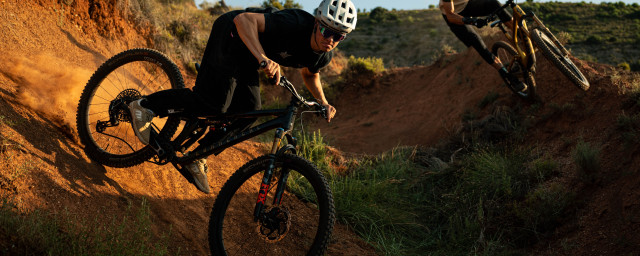The MORC wants to turn your Fox 36 into a super stiff, extra plush, offset adjustable dual crown trail fork

Mojo Rising's Chris Porter might be best known for pushing long, low and slack bike boundaries via Geometron bikes, but his geometric experimentations haven't stopped there. The new MORC crowns for Fox 40 and 36 forks allow you to tweak offset from standard and (for the 36) transform your single crown into a super stiff dual crown fork with high-volume negative spring.
- The best mountain bikes you can buy for under £1,500 - full sus and hardtails
- Five ways to survive winter riding if you hate mud
- The best mountain bike trail and enduro helmets - tried, tested and reviewed
If that intro has got you wondering what on earth fork offset is and why you'd want to change it, then read on. The long and short of it is that your fork offset - the perpendicular distance the front axle sticks out (is offset) from the centre of the steerer tube - interacts with your head angle to give an overall figure for trail.
Trail very simplistically describes how much the bike wants to continue straight ahead, with a greater trail figure having a greater self-centring steering tendency and a short trail figure the opposite. Think of how a trolley wheel always trails behinds where it's fixed to the trolley and it'll give you some idea of how trail works to influence stability on your bike.
Adjusting fork trail can radically impact how your bike handles, something more and more riders want to experiment with, especially as the way it interacts with your head angle gives you a lot of opportunities to adjust how a bike responds to steering input, whether from leaning the bike over or turning the bars.
MORC 40
The first application of the Mojo Offset Reducing Crown - MORC - has been for Fox's series of 40 dual crown downhill forks.
They've been very popular in the World Cup Downhill scene, with around five top-level riders having actually handed over their own money to use them, though with the graphics blanked out to avoid upsetting their sponsors.
When you consider most trail and enduro forks have an offset from around 37-44mm for 650b and 42-51mm for 29" forks, you'll see why many riders want to experiment with a shorter offset Fox 40 fork; many enduro bikes are running much more trail (and hence greater steering stability) than longer travel World Cup downhill bikes.
The MORC 40 moves the offset from 52mm on a standard 650b fork to your pick of 44mm or 49mm, thanks to neat flip-chips that can be popped out and reversed, while you move from 58mm to 50mm or 55mm with a 29" fork.
There's also no conventional steerer tube in the MORC 40, with the upper and lower crowns joined and headset tensioned by an aluminium bolt that cinches the whole lot together. As you can't run any headset steerer spacers with it, bar height adjustment is via shims under whatever direct mount stem you choose. There are two different upper crowns depending on how long your headtube is too, with the drop crown working from 145-170mm head tubes and the flat crown working from 145mm and below.
The weight is said to be pretty similar to a stock 40 crown setup, they cost £375 and they're available now.
MORC 36 dual-crown conversion kit
As the name suggests, this kit - now in the very late stages of final development - enables you to turn a single crown Fox 36 fork into a lightweight, dual crown unit that's said to be significantly stiffer than the original. Why would you want to do this?
Well, while a single crown fork is lighter and allows more steering lock, it's an intrinsically weaker structure that allows much more flex. That has a knock-on effect on handling, but a greater one on suspension performance.
As the fork hits bumps, flex in the upper and lower legs can mean that they are no longer aligned perfectly and can 'jam' slightly, which increases friction in the bushings (often known as 'stick and slip'), reducing suspension performance when you need it most. It's why longer travel forks have larger diameter legs and all downhill and motorbike forks are of a triple clamp design.
Moving to a dual crown also allows a much larger negative volume air spring to be used, which improves small bump performance by minimising breakaway friction; indeed, the negative air spring in the MORC 36 setup is now independently adjustable from the positive one.
The setup also gives you offset adjustment options, just like the MORC 40, while thew increase in fore-aft stiffness and durability is said to be such that the headsets they've been using in frontal-impact testing have died before the lowers have got anywhere near failure.
The conversion kit includes new upper legs, new crowns and an all-new high volume negative air spring shaft, plus an extender that fits onto the damper to you can still adjust it at the bottom of the fork. There will be both Boost spaced and non-Boost models and the setup is designed to work with dampers ranging from the FIT4 to the older style RC2 damper and new FIT GRIP 2 damper.
Cost is going to be in the region of £650 and they're aiming for an October production run. That might seem a lot, but if you have an out of warranty Fox 36 with crown-steerer-unit (basically the upper leg) wear or other issues, it might be a cost-effective upgrade or repair.
We'll hopefully have more on the product's progress soon...
